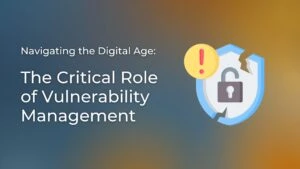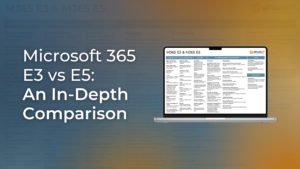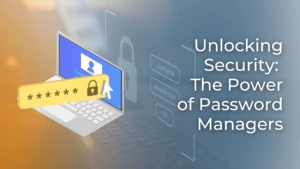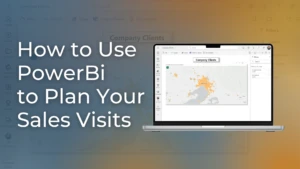A data loss event is any instance in which your company data gets destroyed, lost, or becomes inaccessible. Data loss can occur due to hardware failures, software corruption, human error, or malicious cyber attacks.
Data loss can significantly damage your reputation, hinder productivity, incur high costs and possibly land you in legal trouble if you have not complied with data security regulations.
A data loss event can hinder productivity. If your team cannot find the files or information needed to do their jobs, it slows down their work, causing frustration and lost time and revenue for the business. In addition, data loss causes reputational damage. If you lose customer information and people discover that you did not have the proper protections in place, they may reconsider engaging with your company in future.
With these impacts in mind, you must have a data loss prevention strategy that encompasses backing up your data to avoid the consequences of data loss.
1. What do you require in a DLP strategy?
When working on your DLP strategy, it is essential to consider your data backup requirements and your business needs. Here are some elements to consider:
Backup frequency determines how often you back up your data and what data you back up. You might decide to back up all new data in your business every fifteen minutes or every hour. You might also back up all business data once every twenty-four hours. The more frequent your backup schedule, the less data you risk losing.
Cloud backup stores your data offsite, allowing you to retain and access it if your local systems go down or you lose critical data. Cloud backup is more reliable than traditional backup methods, such as storing data on a hard drive or local server. It is also more convenient than traditional backup methods because it allows you to access data anywhere, anytime.
Cyber security should be top of mind when selecting a backup solution. With the increasing number of cyber attacks, it is more important than ever to ensure that your data is backed up and secured. Make sure to choose a solution that offers encryption and secure storage. Taking these precautions can help protect your company’s data in the event of a cyber attack.
A backup retention policy defines how long backups are kept and how they are deleted. It is important to have a backup retention policy in place to ensure that you can recover your data in the event of a disaster.
2. Who can access, modify, restore or delete your backups?
With accidental deletion, data overwrite and corruption causing 49% of outages, not everybody in your organisation needs access to all data or backups all the time. Therefore, you must restrict access to your backups. There are a few best practices when allowing people to access, modify, restore or delete your company’s data backups.
You should have a dedicated team responsible for ensuring that your backups function properly. This team should have the expertise to perform backups correctly and efficiently.
Map out a clear set of procedures for those authorised to access and restore data during a data loss event. The team responsible for managing backups should have the knowledge and expertise necessary to restore data properly and quickly.
When people leave the business, you must revoke their access to your backups or any other data to mitigate the chances of a data loss event from malicious intent or carelessness.
3. How well-protected are you from a ransomware attack?
Ransomware is malware that encrypts your files and demands a ransom in exchange for decryption codes. While there are many ways for ransomware to find its way into systems, a common method is through phishing emails. Phishing emails are fraudulent emails appearing to come from a legitimate source, such as a trusted company or individual. When clicked, these emails often contain attachments or links that will install the ransomware onto the victim’s system.
A report by Veeam found that cyber security events, like ransomware, caused 51% of outages.
DLP is a security measure that can protect your business from ransomware attacks. Part of your DLP strategy might be identifying threats or problems with your system to prevent leaks of sensitive data. It can do this by monitoring and blocking emails that contain sensitive information or come from suspicious sources.
While DLP is not a foolproof solution to ransomware, it is a vital piece of the puzzle. By combining DLP with other security measures, such as user training, you can help protect the business from these destructive attacks.
4. Does your cyber insurance cover data loss?
Cyber insurance providers mitigate the impacts of financial losses that occur when experiencing and recovering from cyber security events such as ransomware or a data breach. Even the most well-protected businesses can fall victim to a cyber attack, and having insurance can help minimise the financial impact of such an event.
Cyber insurance is one avenue you can take to protect your business against the financial ramifications of a data loss event. Each cyber insurance provider and their policies will differ, so you need to ensure that they offer coverage for data loss.
Data loss can generate significant financial impacts on your business. The costs associated with recovering lost data are substantial, and you may lose revenue due to your team’s inability to work without it. By ensuring that you have an insurance policy covering data loss, you can mitigate the impact on your business.
It is pertinent to remember that cyber insurance does not replace an excellent DLP strategy. You must still take the necessary measures, such as data backup, to reduce your chances of experiencing data loss in the first place.
alltasksIT can secure your DLP strategy
Data Loss Prevention is one element of disaster recovery planning, an essential yet often overlooked aspect of many businesses.
alltasksIT can support you in designing and implementing a DLP and disaster recovery plan. Please visit our Disaster Recovery page for more on how we can maximise and simplify your investment in disaster recovery.
Visit our Veeam Cloud Connect page for information on this solution.






